Are you ready to explore Montana’s wildlife refuges? One notable refuge is the American Prairie Reserve, a huge nature sanctuary spanning 3.2 million acres that provides peace for both people and wildlife.
We’ll guide you on how to reach this remote yet remarkable spot, what activities await you, where to stay, and essential tips for your visit. From biking through the prairie to stargazing under the vast Montana sky, the American Prairie Reserve promises an unforgettable experience.
- Related article: Montana’s Wildlife Refuges
Whether you’re a nature enthusiast, a history buff, or simply seeking peace, this reserve has something special just for you. Ready to discover this untouched piece of nature and history? Let’s set you up for an adventure you’ll remember forever.
6 Key Takeaways on the American Prairie Reserve
- The American Prairie Reserve, Montana, covers 3.2 million acres and is a significant rewilding and conservation project.
- The American Prairie Reserve focuses on land acquisition, rewilding efforts, community engagement, and bison restoration as core strategies to achieve its conservation goals.
- A visit to the American Prairie Reserve requires planning due to its remote location, with key access points and tips provided for a safe and enjoyable visit.
- Activities at the American Prairie Reserve include hiking, biking, driving tours, horseback riding, hunting, stargazing, and wildlife watching.
- Accommodation options at the American Prairie Reserve range from huts to camping on deeded lands.
- Tips for visiting the American Prairie Reserve include fuel and food, emergency preparedness, and wildlife timing. They also include safety around grizzly bears and rattlesnakes and respect for the land and its regulations.
What to Know About the American Prairie Reserve
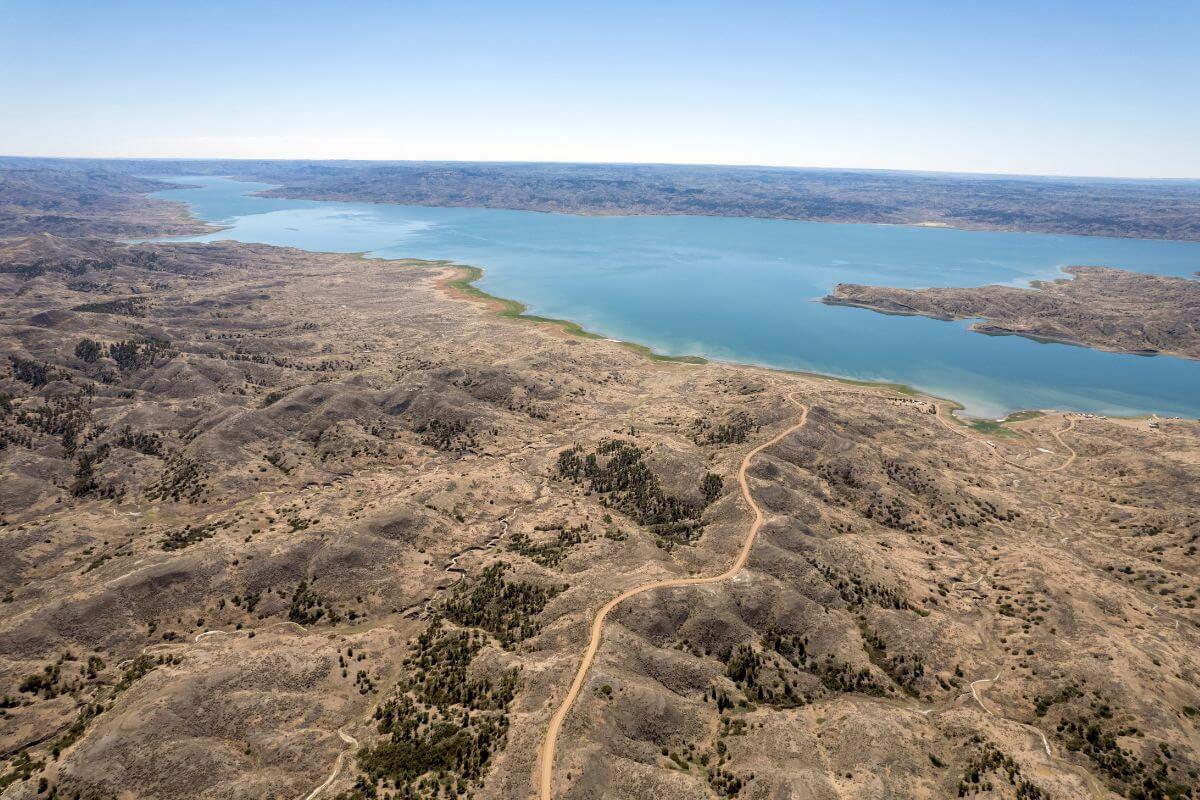
The American Prairie Foundation formed the independent nonprofit organization American Prairie Reserve in 2001 to provide a refuge for people and wildlife. It’s a 5,000-square-mile (3.2-million-acre) continuous area, roughly the size of Connecticut, dedicated to rewilding and preservation.
The American Prairie is about connection – linking additional lands to ensure a healthy ecosystem. This vast area, anchored by the 1.1 million-acre Charles M. Russell National Wildlife Refuge, is a collaborative effort involving public and private land.
This means that various authorities, including the U.S. Fish and Wildlife Service, the U.S. Bureau of Land Management, and state and local agencies, work with the American Prairie Foundation to manage the land and its wildlife.
Here are some of the American Prairie’s goals and how they aim to achieve them:
- Land Acquisition and Access – The American Prairie buys private land, opens it to the public, and focuses on restoring biodiversity. It aims to create a seamless 3.2 million acres, big enough to support a thriving prairie.
- Rewilding – The vision of the American Prairie is to create a place where the shortgrass prairie ecosystem is fully restored. It doesn’t just aim to fix the land, it aims to revive a way of life by bringing back native wildlife and ensuring biodiversity.
- Community Engagement – It’s not all about the land and the wildlife. The American Prairie is deeply committed to the people who live around it. They prioritize local buying and hiring, work closely with community groups and leaders, and focus on education and cultural heritage. This way, they’re not just neighbors but partners with a common goal.
- Bison Restoration – One of the most iconic projects on the reserve is the return of the bison. Thanks to the efforts of the American Prairie and its supporters, bison now roam the land just as they did centuries ago. This isn’t just about bringing back a species, it’s about reconnecting to history and the land.
The American Prairie Reserve isn’t just a piece of land set aside for nature, it’s a living, breathing testament to what’s possible when people and nature work together.
What to Expect on Your Visit to the American Prairie
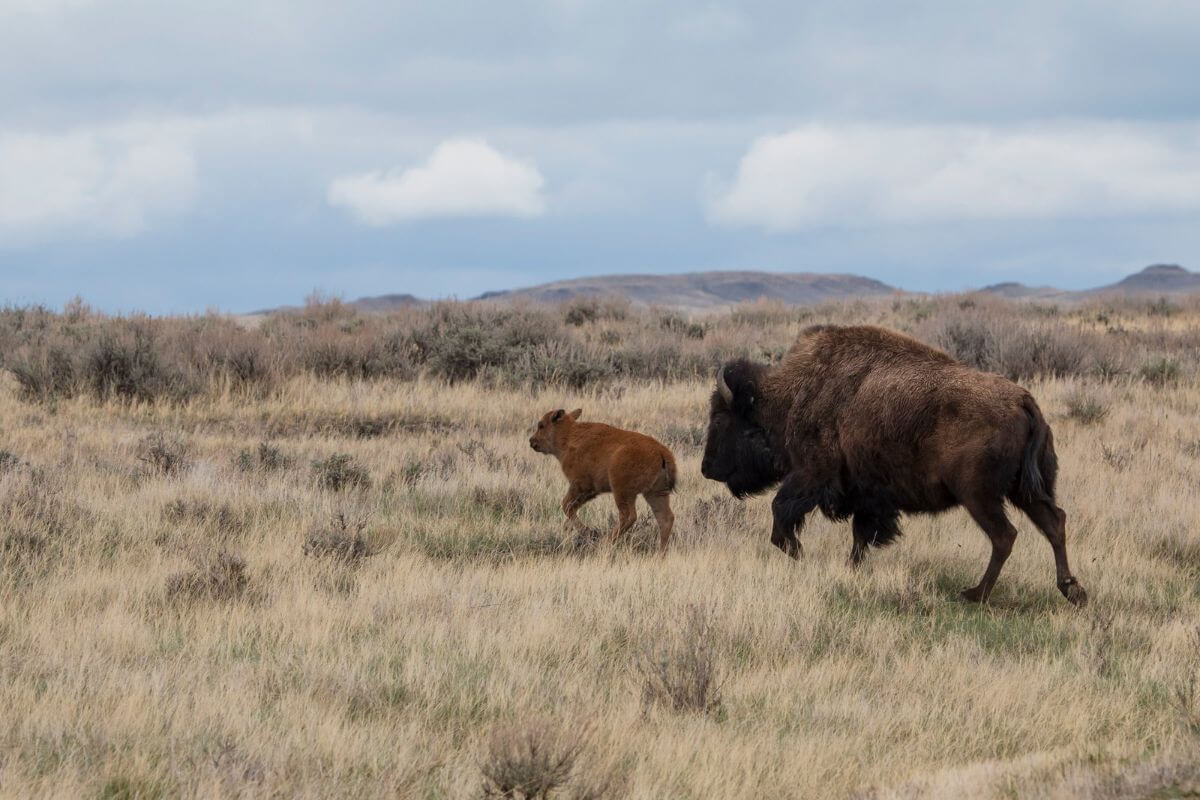
The American Prairie is a beautiful and vast natural area that offers a great opportunity for exploration and enjoyment. This stunning landscape keeps growing by continuously buying land, allowing people to experience its amazing wonders.
Most of the American Prairie is open to the public year-round without permission. Let’s dive into some essential facts about the American Prairie Reserve in Montana to help you when you plan to visit.
1. How to Get to the American Prairie
Visiting the American Prairie Reserve is an adventure into the heart of untouched nature. Getting there needs serious planning because this vast land is far from the beaten path. Most of the roads are gravel or dirt, demanding vehicles with high clearance, 4WD or AWD, and a reliable spare tire.
The reserve spans the northeastern region of Montana, covering the legendary high plains around the Missouri River. It’s bordered by the Upper Missouri River Breaks National Monument, the Charles M. Russell National Wildlife Refuge, and vast stretches of BLM & State Public Land.
For those traveling from afar, you can take commercial flights to Bozeman (BZN), Billings (BIL), or Great Falls (GTF). Be prepared for a half to a full day’s drive from the airport to the reserve, depending on which part of the prairie you’re heading to.
How to get to American Prairie Reserve from Lewistown:
- Head north on Highway 191 out of Lewistown. After 40 miles (64 km), you’ll reach a T-intersection at “Bohemian Corner” with a gas station on the left.
- Turn left onto Highway 191. Go north on Highway 191 through the Charles M. Russell National Wildlife Refuge. After crossing the Missouri River, drive roughly 21 miles (34 km), and you’ll reach DY Junction (mile marker 109). Look for signs on the left that point to the town of Zortman. Turn right onto the gravel road.
- Take a left at the fork past the sign exhibit onto Dry Fork Road. Keep going for 26 miles (42 km) until you reach a T-intersection with trailers and a white building in front, then turn left.
- After 3.5 miles (6 km), bear right when the road forks. Then, continue for 12.7 miles (20 km) until you reach a T-intersection. Take a right at the intersection to reach the road to the Sun Prairie North unit.
- Head towards American Prairie Reserve’s Buffalo Camp, where you’ll find the Enrico Education and Science Center about a mile past the campground.
Various units within the American Prairie, together with neighboring lands, form an important part of conservation efforts and create a breathtaking landscape. These units include PN, Mars Vista, Two Crow, Timber Creek, White Rock, and others.
Finding your way around can be tricky due to limited cell coverage. The reserve offers options for maps, either downloadable, through GPS map apps (although online maps are not always reliable), or by requesting them via mail or on their website.
Visitors are also encouraged to stop by the National Discovery Center for trip planning assistance and to dive into the history and importance of this unique grassland ecosystem.
2. What You Can Do at the American Prairie
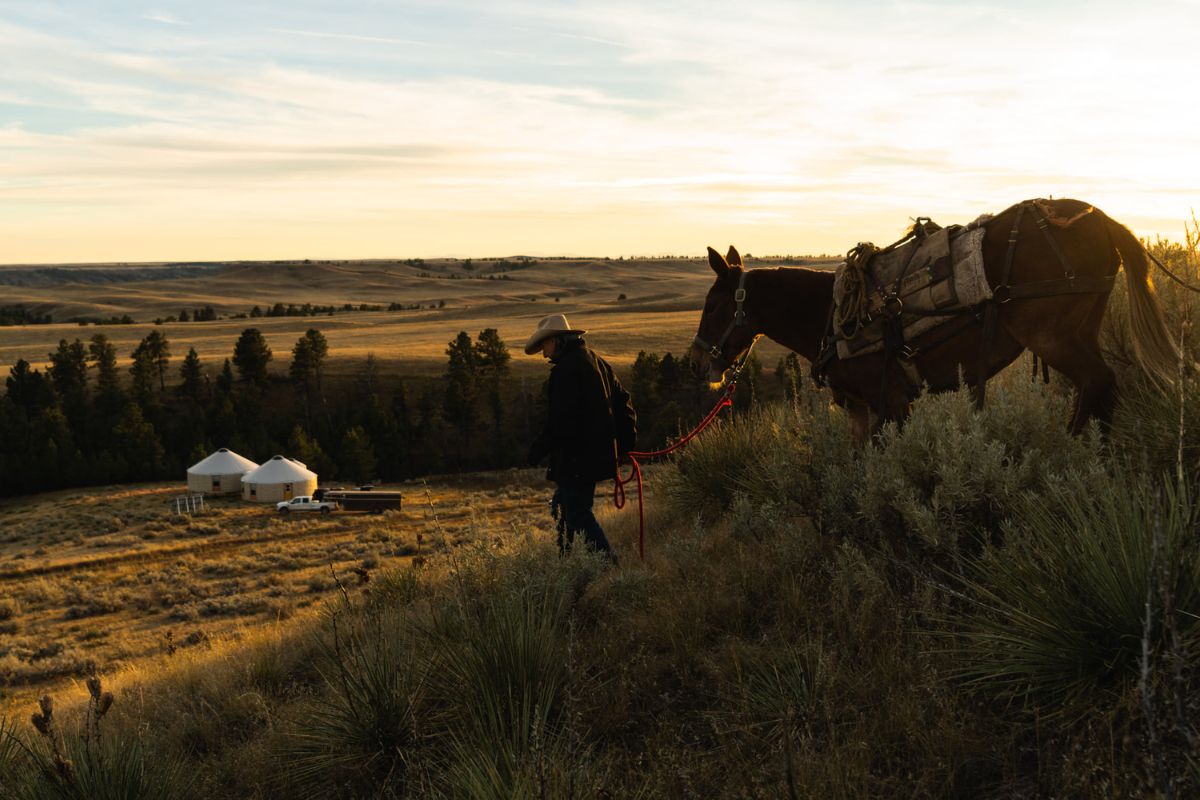
The American Prairie Reserve can be explored in many ways. An adventure awaits you whether you’re on foot, bike, or horseback.
Activities you can do at the American Prairie:
- Hiking – Take to the trails and dirt roads to discover the heart of the American Prairie. Walk the marked interpretive trails or venture off the beaten track to find your way. This is a perfect opportunity to immerse yourself in nature and maybe spot some upland game birds.
- Biking – The PN and Sun Prairie units at American Prairie offer a vast network of dirt roads and two-track trails for those who love the thrill of biking. Check the current trail conditions to ensure you’re set for a great ride before you go.
- Driving Tours – Not a fan of walking or biking long distances? No problem. You can still experience the beauty of the prairie on wheels. Specific roads like 201, 321, and 844 in the CMR National Wildlife Refuge provide stunning views and a chance to see the landscape up close.
- Horseback Riding – Go on horseback and explore the prairie the old-fashioned way. Riding across the vast grasslands is an experience you won’t forget.
- Hunting – The American Prairie offers opportunities through drawing and the Block Management program for hunters. It’s a chance to engage with the land in a way that’s been done for generations.
- Stargazing – The prairie is a perfect spot for stargazing, with its remote location and minimal light pollution. Spend a night under the stars and witness the beauty of the Milky Way.
- Wildlife Watching – Birdwatchers will be thrilled by the diversity of grassland birds in the prairie. Bison roam freely, and prairie dog towns are easily accessible, offering a unique chance to observe these creatures in their natural habitat.
3. Where to Stay at the American Prairie
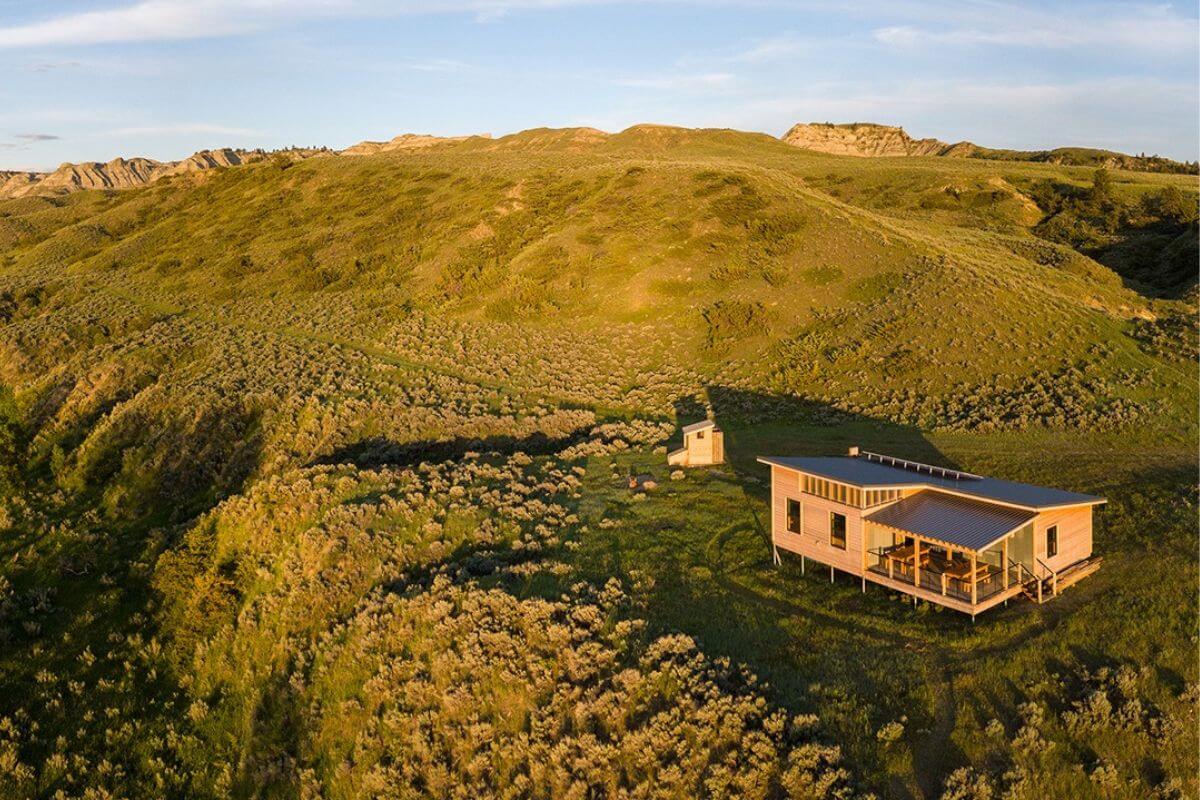
You have a range of unique lodging options if you want to immerse yourself in the heart of the American Prairie Reserve (APR). The APR offers not just a place to visit but a place to stay and connect with nature truly.
The American Prairie maintains two campgrounds where you can stay the night:
- Antelope Creek Campground – The Antelope Creek Campground at Mars Vista is the most easily accessible option, located just 7 miles (11.3 km) north of the Missouri River along U.S. Highway 191. It’s situated on rolling sage/shortgrass prairie. Features include an interpretive hiking trail, a nearby prairie dog town, and wetlands that are a birdwatcher’s paradise.
- Buffalo Camp – Buffalo Camp offers a unique stay for those who want a more remote experience. It is located on the rolling sage/shortgrass prairie of the Sun Prairie property, approximately 50 miles (80.5 km) south of Malta. It is home to the American Plains bison herd, prairie dog towns, and pronghorn. There is also a 1-mile (1.6-km) hiking trail close to the Charles M. Russell National Wildlife Refuge.
The Myers Family Huts also offer options for a more comfortable stay at the American Prairie:
- Founders Hut – Offers stunning views of Central Montana mountain ranges and is surrounded by tracks perfect for hiking, biking, and skiing.
- Lewis and Clark Hut – Located near the Missouri River, this hut is a great spot for river access, hiking, and enjoying views of the river breaks.
- John and Margaret Craighead Hut – Nestled near the Judith River, it is ideal for those interested in biking, fishing, or paddling.
The APR offers dispersed tent camping on its AP-deeded lands if you prefer a more traditional camping experience. Several regional campgrounds are also nearby.
4. Tips for Visiting the American Prairie
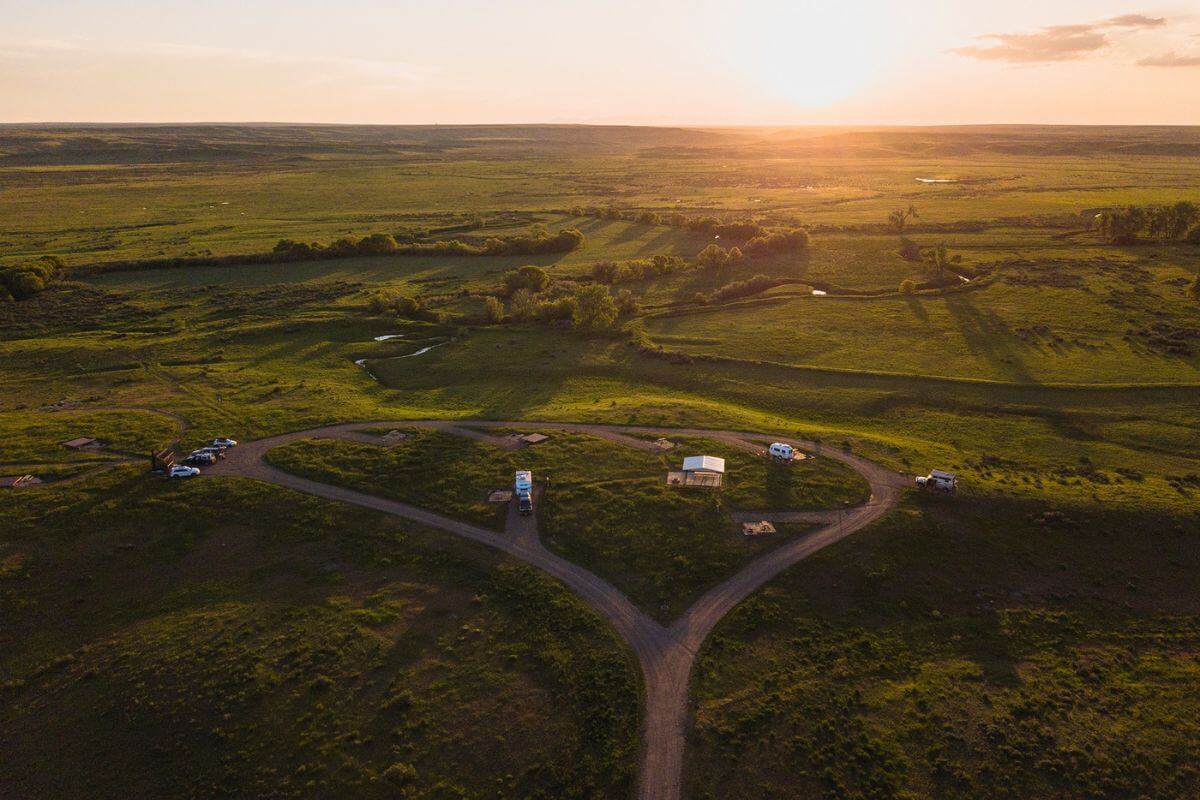
You’re in for a unique adventure at the American Prairie Reserve. However, it’s important to be prepared. The prairie doesn’t have the usual facilities you might be used to.
Some essential tips to make your visit to the American Prairie safe and enjoyable:
- Fuel and Groceries – Fuel and groceries are not available on the prairie. Fill up your tank and pack enough food and snacks to keep you going. Nearby towns like Lewistown, Zortman, Harlem, Malta, and Glasgow are your best bets for supplies.
- Emergency Preparedness – Emergency services are also a bit of a drive away. While the prairie is peaceful, it’s always best to be ready for the unexpected. Ensure you have a first aid kit and any necessary medications.
- Best Times to Visit – Timing is key to seeing the wildflowers or wildlife. May and June are perfect for flower enthusiasts. Any time of year works for wildlife lovers, but spring, summer, and fall are when you’ll see the most.
- Safety Tips – The prairie is home to grizzly bears and rattlesnakes. To stay safe, make noise while walking to warn bears of your presence and watch out for snakes. It’s their home, so let’s respect their space.
- Collecting Rules – For those interested in collecting, you can take deer and elk antler sheds, but only two a day. You can also pick fruit, mushrooms, and plants for yourself, but not for commercial use. Bison bones and skulls, however, are off-limits to everyone to help with nutrient cycling.
- Prohibited Items – You can’t take human artifacts or firewood. These are part of the prairie’s history and ecosystem, so they must stay put.
- Pets – Are you bringing your furry friend along? Dogs are welcome but must always be on a leash or under your control. Don’t leave them outside unattended.
Follow the rules, look for posted signs, and use the maps provided by the reserve throughout your visit. Respect the land and the people who work hard to protect it.
American Prairie Reserve Final Thoughts
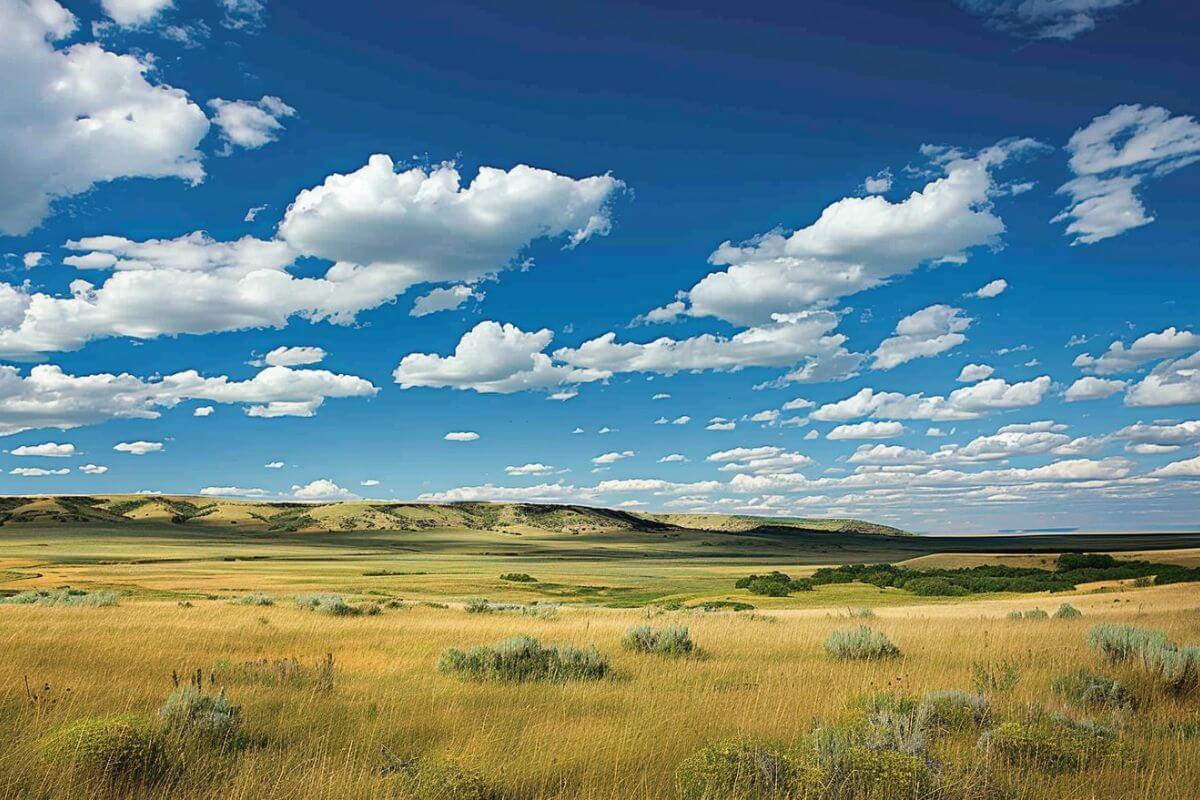
The American Prairie Reserve shows what can be achieved when people work together to preserve nature. This 3.2 million-acre expanse in Montana isn’t just about rewilding and conservation, it’s a commitment to creating a balanced ecosystem.
The reserve introduces a new way of living with nature through strategies like land acquisition, rewilding efforts, community engagement, and bison restoration. Visitors can explore this open space, offering hiking and wildlife-watching activities.
The American Prairie provides not just an adventure into the wilderness, but also an opportunity to experience the beauty of a world untouched by modern development. Safety and preparation are key, given the remote location and the need to respect the natural inhabitants.
American Prairie Reserve FAQs
1. Can You Visit the American Prairie Reserve?
American Prairie Reserve is open to visitors. It offers opportunities for outdoor activities such as hiking, wildlife viewing, camping, and educational programs.
2. What Is the American Prairie Reserve?
The American Prairie Reserve is a non-profit organization dedicated to creating one of the largest nature reserves in the continental United States. Located in northeastern Montana, it aims to restore and conserve a vast expanse of native prairie habitat and wildlife, including iconic species like bison, pronghorn, and prairie dogs.
3. Who Is Funding the American Prairie Reserve?
The American Prairie Reserve receives funding from various sources, including private donations, philanthropic organizations, grants, and partnerships with conservation groups and government agencies. Major donors, individual supporters, and foundations contribute to the organization’s efforts.
4. Who Runs American Prairie?
The American Prairie Reserve is managed by a team of dedicated professionals, including conservationists, biologists, land managers, and support staff. The organization is led by a board of directors and executive leadership who oversee its strategic direction, operations, and conservation efforts, such as bison restoration programs.
5. How Much Land Does American Prairie Reserve Own?
Since 2004, the American Prairie Reserve has completed 40 transactions to build its habitat base, totaling 462,803 acres of land. Within this total, 126,101 acres are private lands owned by American Prairie, while 336,702 acres are leased public lands, including federal and state properties.
Discover Montana’s hidden treasures. Keep reading for more exciting insights:
- Guide to Benton Lake Wildlife Refuge
- Bison Range Wildlife Refuge Facts
- Learn About Black Coulee Wildlife Refuge
- Guide to Grass Lake Wildlife Refuge
- https://digitalrepository.unm.edu/nrj/vol59/iss1/4/
- https://nationalzoo.si.edu/news/restoring-americas-prairie
- https://nationalzoo.si.edu/conservation-ecology-center/restoring-americas-wild-prairie
- https://commons.wikimedia.org/wiki/File:American_Prairie_Reserve_2021_05.jpg
- https://www.facebook.com/americanprairie/photos/pb.100064243076953.-2207520000/3420935004587343/?type=3
- https://www.facebook.com/americanprairie/photos/pb.100064243076953.-2207520000/4207134015967434/?type=3
- https://www.facebook.com/americanprairie/photos/a.120088074672069/3664593796888128/?type=3
- https://www.facebook.com/americanprairie/photos/pb.100064243076953.-2207520000/4586393148041517/?type=3

